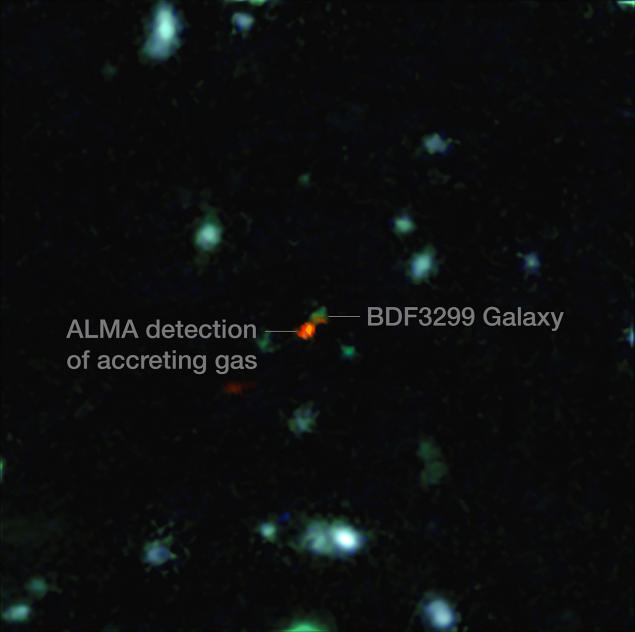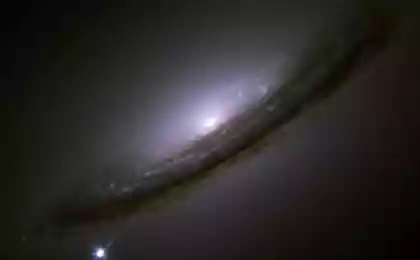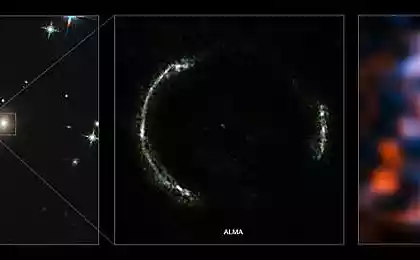794
Astronomers using the radio telescope ALMA spotted early galaxies with unprecedented clarity

British astronomers using the largest radio telescope Chilean Atacama Large Millimeter Array (ALMA), seen galaxies form , which appeared at the dawn Universe during the first billion years of its existence. Previously, their images look like colored dots - now they get a more detailed picture.
After a few million years after the Big Bang, the universe was filled with hydrogen. Through this fog could not see first stars , who gathered in the first galaxies - objects so early today so inaccessible to observation. Due to radiation, rather large objects (stars, quasars, black holes, and then the galaxy) gradually dissipated the fog universal, and the Universe started to become transparent to ultraviolet radiation.
This period is called the era of scientists реионизации. It took place in the time between 550 million. 800 million years. Years after the Big Bang.
Astronomers set up a telescope on the perception of glow emitted by ionized carbon, comes from clouds of gas, within which stars and galaxies formed. The aim of the study was to investigate the formation of the first galaxies - not particularly bright, unremarkable, and at the same time the most common objects.
"This is by far the most inland of our galaxy, born less than a billion years after the Big Bang, and emit such radiation - explains Andrea Ferrara, co-author from Italy. - These observations allow us to follow the formation of the first galaxies. We first see the very first galaxies do not as small dots , as well as objects with discernable internal structure ».
The photographs show that most strongly radiates is not the center of the gas cloud and its edge. Apparently, this is due to the fact that inside the cloud due to the active formation of new stars formed quite a hostile environment, the gas scatters radiation and powerful supernova explosions. And the glow comes from a relatively cold carbon collected on the edge of the clouds.
The study allows us to construct a fairly accurate computer models formation of the first galaxies and compare them with observations.
Telescope Atacama Large Millimeter Array (Atacama Large Millimeter / submillimeter Grille, ALMA) earned last year . The system consists of 66 elements, antennas, which are located on the plateau of Chajnantor in the Atacama Desert, Chile. ALMA takes the spectrum of radiation with a wavelength of a millimeter or less. Previously, radio telescopes are not tracked (with rare exceptions) this range, but now scientists have a new, powerful tool that can, in the words of one of the participants of the project "open a window into the universe."
Source: geektimes.ru/post/259164/























